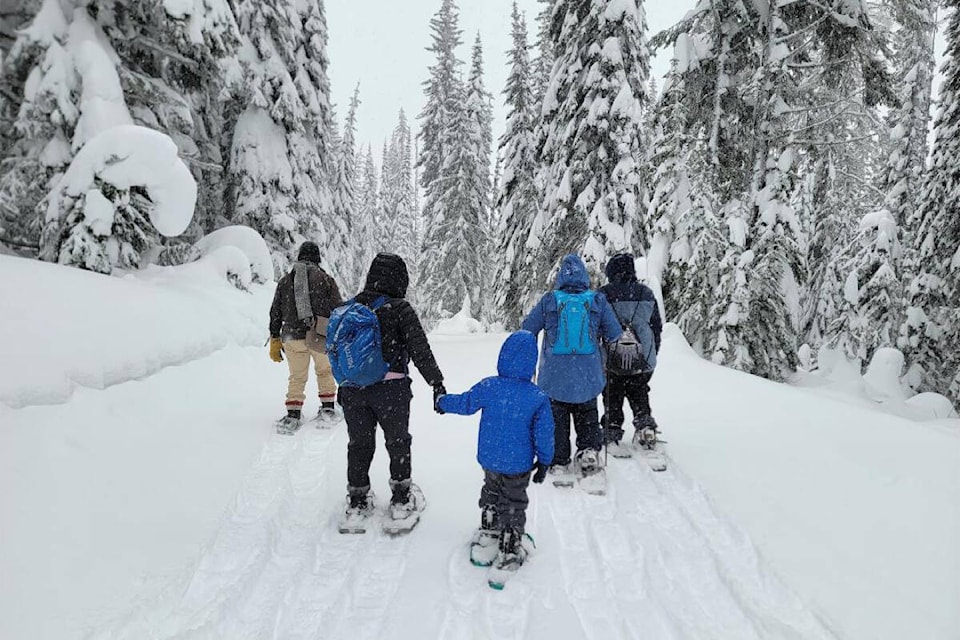A new report from global consulting firm Deloitte details recommendations on how to improve mental health outcomes for First Nations, Metis and Inuit youth across Canada.
The report, entitled SA����Ӱ�Ӵ�ý�Breaking Colonial Legacies and Mapping New Mental Pathways to Wellness,SA����Ӱ�Ӵ�ý� is the third volume in a series that seeks to amplify the perspectives of Indigenous youth on the barriers and opportunities for various facets of reconciliation.
Dr. Lana Potts, a family physician from the Piikani band on Treaty 7 territory, is the national Indigenous health lead at Deloitte Canada.
She told Alberta Native News the report is the product of conversations with Indigenous youth and mental health-care workers that occurred over a week in 2022 focusing on the barriers to mental health in Indigenous communities and potential solutions.
The impacts of inter-generational trauma among Indigenous communities are well-known, but Potts pointed towards a less familiar concept in the report SA����Ӱ�Ӵ�ý� SA����Ӱ�Ӵ�ý�racial battle fatigue.SA����Ӱ�Ӵ�ý�
She defined this form of fatigue as SA����Ӱ�Ӵ�ý�being tired of constantly having to prove yourself, constantly having to battle racism, having struggles related to racism, and itSA����Ӱ�Ӵ�ý�s really wearing them down.SA����Ӱ�Ӵ�ý�
The report is divided into four sections SA����Ӱ�Ӵ�ý� the social determinants of mental wellness, Indigenous approaches towards mental wellness, access to mainstream mental health care, and support in navigating the mental health-care system.
Dr. Potts said these were four recurring themes extrapolated from the interviews.
SA����Ӱ�Ӵ�ý�When you look at these four pathways to wellness, itSA����Ӱ�Ӵ�ý�s not in terms of a forward or backward plan, but itSA����Ӱ�Ӵ�ý�s a continuum of what needs to be done and a holistic approach around addressing mental wellness,SA����Ӱ�Ӵ�ý� she explained.
Social determinants, which Potts called the SA����Ӱ�Ӵ�ý�foundationSA����Ӱ�Ӵ�ý� of the barriers towards mental wellness among Indigenous youth, include poverty, poor housing, a lack of access to clean water, and unreliable transportation services.
SA����Ӱ�Ӵ�ý�One of the key findings that was surprising to me was around communication support for Indigenous communities. It is not equitable to non-Indigenous communities, with particular focus on broadband,SA����Ӱ�Ӵ�ý� Potts said.
The report notes that, as of the end of 2021, 43.3 per cent of First Nation reserves in Canada had access to the minimum broadband speed of 50 megabits per second for downloads and 10 megabits per second for uploads, compared to 91.4 per cent of all Canadian households.
This inequity impedes the ability of people on reserve to access a whole range of services, including those concerning mental health, Potts noted.
SA����Ӱ�Ӵ�ý�This was a significant impairment in affecting their overall mental health SA����Ӱ�Ӵ�ý� feelings of isolationSA����Ӱ�Ӵ�ý� and not knowing how to get support, she said.
A key component of mental wellness is SA����Ӱ�Ӵ�ý�being seen, being heard and being valued,SA����Ӱ�Ӵ�ý� Potts explained.
From an Indigenous perspective, she explained, this means allowing Indigenous youth SA����Ӱ�Ӵ�ý�to have a strong cultural identity, to be able to know where they come from through land connection, through ceremony, through being able to access their traditional teachings, to be able to say their name, to be able to say, `This is who I am.SA����Ӱ�Ӵ�ý�SA����Ӱ�Ӵ�ý�
The preservation and revitalization of Indigenous languages plays a key role in fostering this strong sense of identity, as does encouraging traditional Indigenous practices, such as skinning hides or making moccasins.
Beyond the physical barriers to young Indigenous people receiving mental health care on reserve is the structural racism that pervades Canadian health care.
SA����Ӱ�Ӵ�ý�A lot of indigenous people do not want to access care because of racism, because of this feeling of not feeling valued,SA����Ӱ�Ӵ�ý� Potts explained. SA����Ӱ�Ӵ�ý�Not feeling like youSA����Ӱ�Ӵ�ý�re being treated equitably has been a huge barrier for young people in getting care.SA����Ӱ�Ӵ�ý�
A way to address this barrier, she added, is by embracing traditional Indigenous forms of healing, allowing communities SA����Ӱ�Ӵ�ý�to identify their own ways of knowing and their own wellness in order to create solutions.SA����Ӱ�Ӵ�ý�
An integration of traditional Indigenous medicine practices with western psychology and therapy, Potts noted, was seen by participants as SA����Ӱ�Ӵ�ý�very, very keySA����Ӱ�Ӵ�ý� to making mental wellness spaces more accessible for Indigenous youth
SA����Ӱ�Ӵ�ý�This report is very solutions-based. ItSA����Ӱ�Ӵ�ý�s actually going back to what kept us well, which is our ways of knowing. Our traditional practices have always kept us well. With this intergenerational trauma that is affecting our communities, if we can go back to our own strengths, and we build back on whatSA����Ӱ�Ӵ�ý�s inherent within ourselves, we find wellness,SA����Ӱ�Ӵ�ý� Potts said.
SA����Ӱ�Ӵ�ý�By Jeremy Appel, Local Journalism Initiative reporter, Alberta Native News



